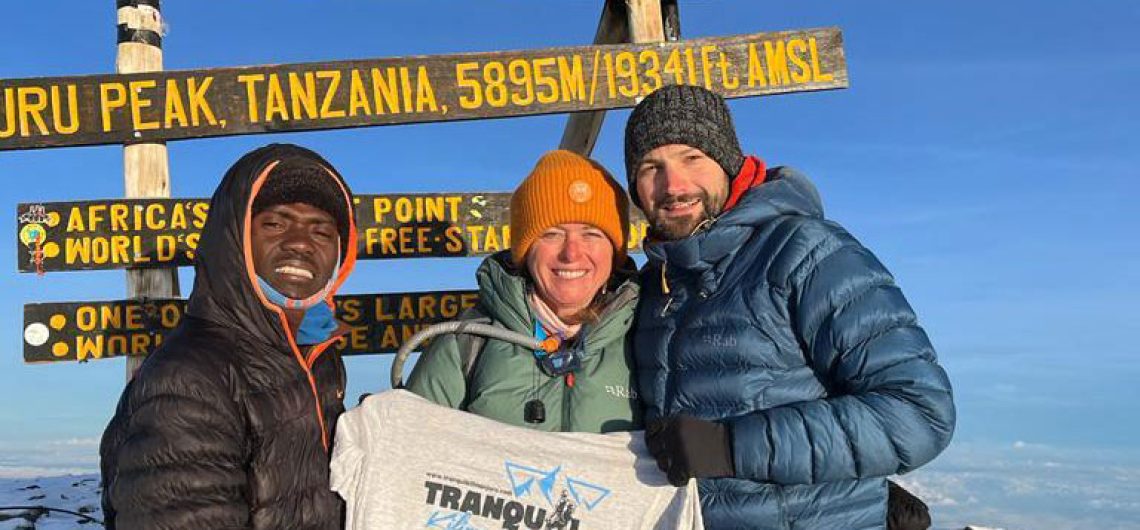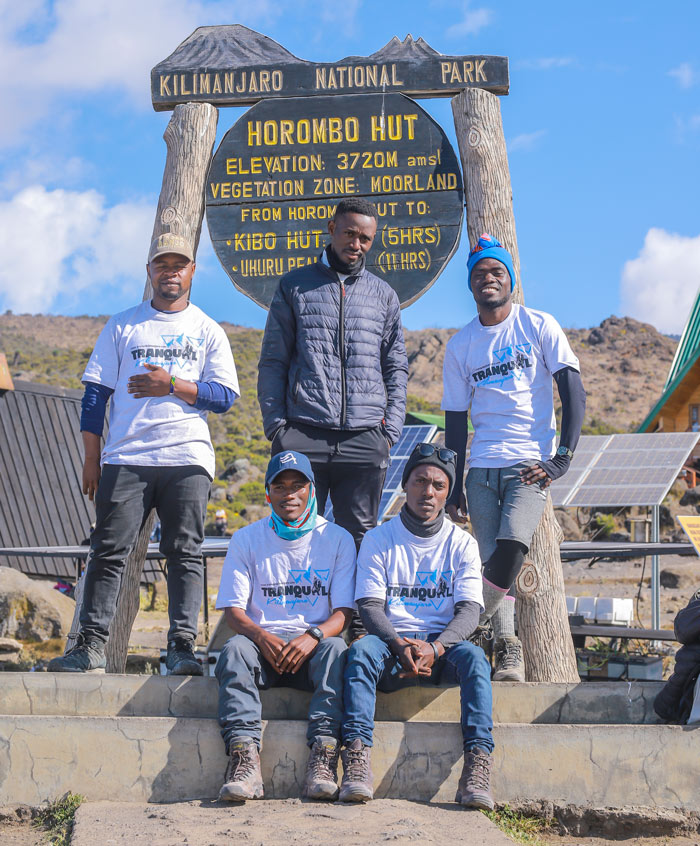Technically, it is not allowed to climb Mount Kilimanjaro without a guide. The Tanzanian authorities require all climbers to be accompanied by a certified guide, and it is mandatory to book a trek through a registered Kilimanjaro trekking company. This regulation is in place to ensure the safety and well-being of climbers, as well as to protect the fragile ecosystem of the mountain.
Mount Kilimanjaro is a challenging and potentially dangerous climb, and having an experienced guide is crucial for navigation, acclimatization, and emergency situations. Guides are knowledgeable about the terrain, weather conditions, and altitude-related risks, which significantly increases the chances of a successful and safe ascent.
Additionally, porters are usually hired to carry camping equipment, food, and personal belongings, which eases the physical burden on climbers and allows them to focus on the climb.
Some people may feel like they are “glamping” and being too pampered when a full staff is provided to guide the climb, carry the supplies, and take care of camp duties. They are willing to put up with all the challenges involved in reaching the seventh top peak. They want to believe they merited the summit entirely. Additionally, they feel a little ashamed of the four-star care they receive from a sizable group of porters, cooks, and guides.
Second, some climbers choose to go it alone to save money. The cost of a Kilimanjaro adventure is expensive. Even though park admission prices make up the majority of running costs, employee salaries come in second. It would make financial sense to get rid of the entire mountain staff.
Therefore, it is highly recommended to climb Mount Kilimanjaro with a certified guide from a reputable trekking company to ensure a safe and enjoyable experience.
Why do you need a mountain guide on Kilimanjaro?
Climbing Mount Kilimanjaro without a guide is not possible due to several important reasons:
- Safety: Mount Kilimanjaro is a challenging and potentially dangerous climb, especially at high altitudes. Having an experienced guide is essential for ensuring the safety of climbers. Guides are trained to recognize signs of altitude sickness and other health issues, and they can provide appropriate assistance and advice.
- Navigation: The mountain has various routes and paths, and it is easy to get lost, especially in adverse weather conditions. Guides are familiar with the routes, terrain, and potential hazards, ensuring climbers stay on the right path and avoid dangerous areas.
- Acclimatization: Climbing Kilimanjaro requires proper acclimatization to prevent altitude-related illnesses. Guides are experienced in managing the pace of the ascent, allowing climbers to adapt gradually to the increasing altitude and reduce the risk of altitude sickness.
- Park Regulations: The Tanzanian authorities require all climbers to be accompanied by a certified guide as part of the park regulations. This rule is in place to maintain the safety and well-being of climbers and protect the delicate ecosystem of the mountain.
- Environmental Conservation: Having guides on the mountain helps to enforce responsible trekking practices and ensure climbers adhere to Leave No Trace principles to minimize their impact on the environment.
- Support: Guides and porters provide essential support during the climb. Porters carry camping equipment, food, and personal belongings, which ease the physical burden on climbers. Guides offer encouragement, assistance, and motivation, enhancing the overall climbing experience.
It is a rule that you cannot climb Kilimanjaro alone, without a guide
Unfortunately, climbing Kilimanjaro without a certified guide is not allowed. When the Kilimanjaro National Park Authority issued guidelines for what are referred to as unsupported treks on the mountain, this rule was put into place. Today, those same laws are still in force. As a result, it is prohibited under park regulations to ascend Kilimanjaro without a certified guide.
A licensed tour operator must also employ the guide or have another connection with them. The organization with the authority to buy park permits is the tour operator. Therefore, a freelance guide who lacks proof of affiliation with a legally existing company is ineligible to apply for permits.
Climbing Mount Kilimanjaro is a significant undertaking, and the presence of experienced guides greatly increases the chances of a successful and safe ascent. Therefore, climbing the mountain without a certified guide is not only prohibited by park regulations but also strongly discouraged for the well-being and enjoyment of climbers.
The neighborhood guides and rangers are quite familiar with one another and can spot an outsider. The mountain is a crowded area with many of eyes. If you are found rock climbing without a certified guide, you risk being fined, jailed, or deported. And you’ll most likely get caught. Avoid taking that chance!
Kilimanjaro Climbing Without Porters
So what if you just hire a guide?
This is permissible legally. Regulations only mention having a certified guide with you. Porters and other support personnel are not mentioned. However, there are a number of significant obstacles that render this project unfeasible for the majority of people.
First, the guide himself will need at least one or two porters to carry his stuff. If it’s not necessary, he doesn’t want to spend days carrying food, fuel, tents, and other supplies up the mountain. He does not share your beliefs, despite the fact that climbing without assistance may be your ambition.
It would be comparable to someone ordering you to intentionally make your job enormously harder and you giving in. As a result, be prepared that your guide will ask you to cover his salary as well as the wages of at least one or two additional porters.
Second, the availability of water is a major problem. In order to ensure that our clients have access to enough water for drinking, cooking, washing, and flushing portable toilets, a crew of porters departs from camp each day to get water in five-gallon buckets and bring them back to camp.
When the water source is nearby, fetching water in this manner is manageable at lower heights. However, it becomes extremely difficult at higher altitudes. Above 13,000 feet, there is no stable source of water. Around 15,400 feet is where the high camps Barafu, School Hut, and Kibo Hut are situated.
Therefore, in order to climb alone, you would also need to carry all of your other equipment and enough water to last you until you reached 13,000 feet. In other words, for the most challenging portions of the climb, your pack weight may exceed 70 lbs. It is therefore unfeasible to climb Kilimanjaro without porters, even if it may still be possible in principle.
![]()



Comments